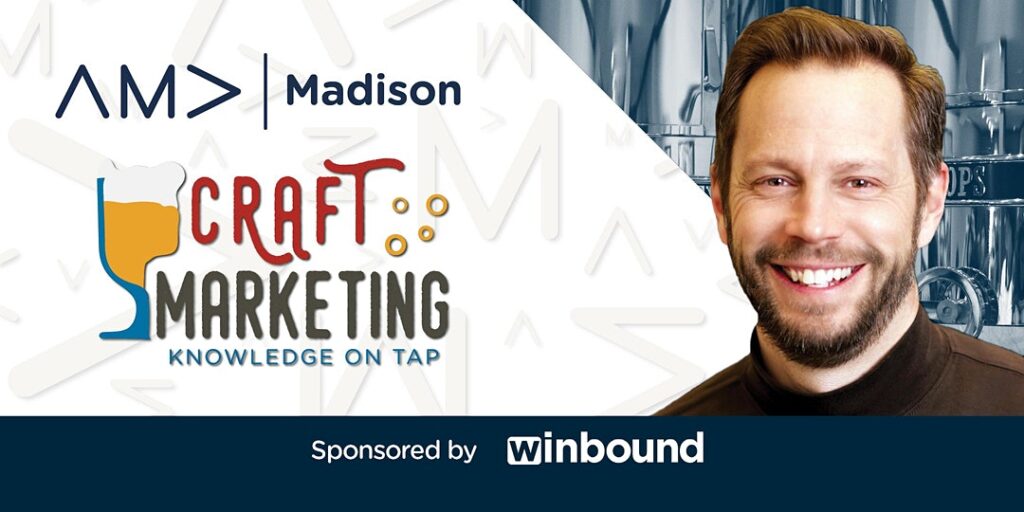Craft Marketing welcomes Chris Hofmann of SeQuel Response to our Aug. 25 virtual event. He’ll enlighten us about marketing attribution, described as one of our profession’s most challenging and misunderstood disciplines.
Register here for the online event that begins at 4 p.m. with networking. Many thanks to our Winbound, our sponsor.
Check out Chris’s preview of what attendees will be learning at the upcoming Craft Marketing webinar.
Q: Tell us a little about yourself and what SeQuel Response does.
I’m Vice President of Digital Services at SeQuel Response, a direct response agency based in Eden Prairie, Minnesota, with offices in Madison, Dallas and San Diego.
Some people are puzzled when they see “direct response agency” as opposed to “advertising agency” or “digital agency.” Direct response is a specific discipline within marketing and advertising that takes a purely quantitative approach to campaign design and evaluation, with a foundation in a test and learn mindset. While traditional advertising puts emphasis on creative, branding and awareness, our focus is on the continual optimization of new customer acquisition costs (CAC). So while we do produce creative, the best creative content might not be our personal or the client’s favorite from a creativity standpoint. Instead, it could be the option that delivers the lowest cost per acquisition (CPA) in a test matrix.
I’m a College of Letters and Science graduate of the University of Wisconsin-Madison. For the past 20 years, I’ve worked in various marketing roles on the client side across a range of verticals. They include medical devices, health insurance and higher education. In 2016, I joined SeQuel Response to start the digital advertising practice after being a client of theirs while at WPS Health Solutions.
Q: Why is marketing attribution so important, and why should attendees care about it?
Marketing attribution is also known as multi-touch attribution (MTA). It helps answer questions about the effectiveness of marketing channels in isolation. But even more importantly, it looks at channels in combination because customer journeys are rarely, if ever, about a single touch resulting in a conversion.
While most marketers understand the folly of judging the effectiveness of marketing channels with last-touch attribution, MTA’s complexity often makes people throw up their hands and go with the default. That means many decisions about the marketing mix continue to rely heavily on comfort and gut instinct. Getting a handle on MTA helps marketing leaders make better decisions when allocating budgets to channels to help meet next year’s sales goals.
When the boss says, “You have a one-million-dollar budget, and your goal is X new customers,” a solid understanding of MTA is your friend.
Q: Can you share a few best practices concerning marketing attribution?
I like to quote Google’s analytics evangelist Avinash Kaushik for the most obvious best practice. “The only use for last-click attribution now is to get you fired. Avoid it.” If you are still looking at marketing channel effectiveness through this lens, you are missing opportunities to grow your business.
Another best practice is to understand that every ad platform will use a default attribution model that puts its results in the best possible light. If you rely on an agency to buy media for you and report on results, it’s the same issue. Make sure you understand the attribution model and the lookback windows used to count conversions.
There are many people out there, especially in the programmatic advertising space, presenting reports to clients with conversions based on completely unrealistic attribution models and lookback windows. Arm yourself with attribution knowledge and insist on transparency in reporting. Even if you are running your own campaigns, make sure you understand what counts as a conversion, and you are comfortable with the attribution model.
Q: What is the big takeaway people can expect if they attend the event?
Marketing attribution is complex, but not impossible. After people attend this event, I hope they will be eager to dig into their multi-channel funnel reports in Google Analytics. Then they can start gaining insights into conversion paths that permit them to allocate their marketing budgets in the future with more confidence.


